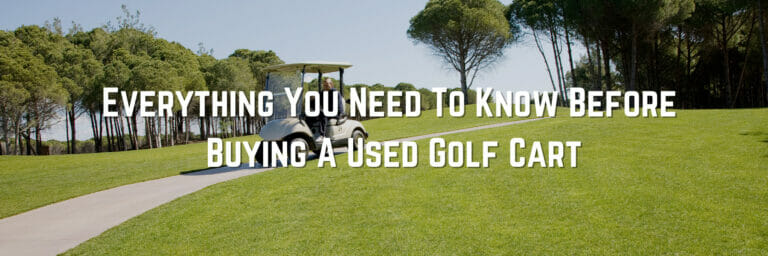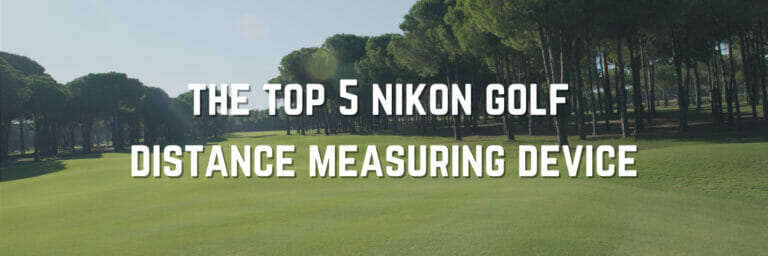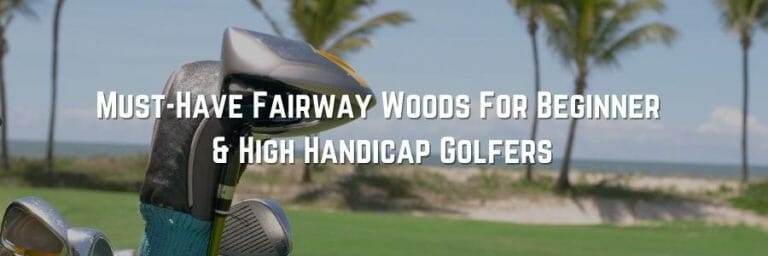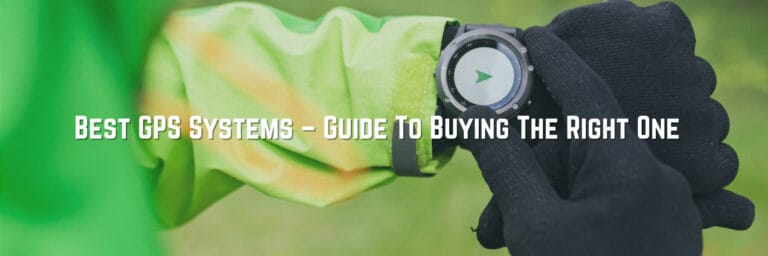Practice Golf Balls – Need To Improve Your Inside Game?

You probably know that there are outdoor practice balls, like what you get when you go to the practice range. Did you know they make indoor practice balls as well? Even specialty outdoor balls that allow you to practice your swing – with the ball never leaving your back yard!
Practice makes every little thing excellent, including your Golf shot. In golf, exercising your swinging technique can assist you in understanding the grip on the club and also readjust your position. Practice requires a great deal of repeating, so it is not suitable for exercising on a golf course. Real golf balls are hefty; they can harm the spaces you utilize for practice.
You require golf practice golf balls made of foam or plastic; that is lightweight as well as can be used without harming the space or harming anybody around you.
Lugging practice golf balls in your golf bag will certainly help you practice your shots before the actual golf game to improve your putt and strikes. You can find different types of plastic or foam practice golf balls, based upon cost, sturdiness, weight, as well as the design of exactly how they imitate actual golf balls.
Considering the material, the practice golf ball can be classified into two categories: Foam and Plastic.
Though any of these two types of training golf balls will do just fine for indoor practitioners, the plastic and foam practice golf balls sometimes vary in durability, cost, and the perfection of mimicry of their flight.
An essential difference between different types of plastic golf balls and foam golf practice balls is durability. Like some users of The Sand Trap golfing forum have noted, plastic balls can become cracked or smashed after several full shots of practicing.
Although deformation can be a problem in less expensive foam balls, it is known that some advanced models of golf practice balls, like the Almost Golf balls, have been noted to have a longer life in reviews from websites like Amazon and other golf enthusiast forums.
This means that even though foam practice golf balls may cost a little more, they are more durable than plastic practice golf balls, which should make them a better and long-term investment.
As with standard golf balls, there is a notable difference in the price of different types of training golf balls. For example, at the time of publication, at Dick’s Sporting Goods, a pack of 18 high-impact plastic practice “whiffle” golf balls starts at about $7, and therefore each ball will cost you about 39 cents per ball.
A pack of 12 quality foam practice golf balls will cost you about $19.99, which means each ball is costing about 67 cents. On the other hand, the most advanced models of foam balls, such as the Almost Golf brand, can cost about $1 per ball, depending on the type and amount purchased.
One of the most significant areas where plastic golf balls and foam golf balls are different is the way it simulates the feel of a regular golf ball and its flight. As several golf blogs point out that low-end foam and plastic golf balls are almost as close to regular ball flight, slicing or hooking if your swing results in a sliced or hooked shot.
However, one of the disadvantages of these balls is that they cannot create the same feeling about the impact as a regular golf ball, and their flight path can vary significantly from the proper ball flight path.
This is one of the key advantages of using advanced foam practice golf balls with a compressed core, like Almost Golf Balls and many other brands. This is because they are able to replicate the realistic feedback when the clubhead makes contact with the golf ball.
You might think, at the end of the day, they’re all just the same right? Balls that are made to practice with? Wrong. There’s more to these practice golf balls than you think. That’s why we listed down and reviewed our top 5 picks for the best practice golf balls in the market to help figure out which ball suits you best.
AT A GLANCE – THE TOP 5 PRACTICE GOLF BALLS (SEE ON AMAZON) | |
1. TOP PICK: GoSports Foam Golf Practice Balls 2. BUDGET PICK: PrideSports Practice Golf Balls 3. VALUE FOR MONEY: Dsmile Practice Golf Ball 4. FOR LIMITED-FLIGHT: SKLZ Practice Impact Golf Balls 5. BEST ALL ROUNDER: Callaway HX Practice Golf Balls | |
1. TOP PICK: GoSports Foam Golf Practice Balls | |
SPECIFICATIONS
| |
WHAT WE THINK: | |
Have you been wanting to buy Almost Golf Practice Balls but don’t have the budget to do so? Well, these practice golf balls from GoSports are the closest you can get. The ball does a good job of simulating the actual flight of a golf ball. They are not mystical balls and may not feel like the impact of a real golf ball. However, they launch accurately and do not evade your net with sufficient force to destroy any wall, window, or roof in your house. Which makes it great to practice indoors too! We have tested many different types of foam golf balls. Most of them are really soft and light and don't give the feeling that you're hitting the real thing. These balls from GoSports are a lot heavier, and while they still don't feel like a real golf ball yet they're much more solid, and they come very close to how a real golf ball would behave. One point to remember is that they fly well beyond standard foam balls. | |
WHAT CUSTOMERS THINK: | |
"Was looking for the almost golf balls, but I didn’t want to pay the high price practice balls that I probably lose. I saw these while search for “almost golf balls” and they looked similar, so I gave them a shot for the price. They are the best practice balls I have used, they fly true and farther than expected. Will buy again when I lose them all. Only complaint I have is that the blue and red balls are hard to see in the grass, I would suggest just making the yellow and orange, easier to see and find."
"These balls are awesome. Colors are perfect, I can find all of them when I hit them out of sight. I have a small par 4 in my yard, and first shot goes up over my house. I haven't lost a ball yet. They have a great feel when you hit them, and I would say they go about 40% of what a real ball would go with the same swing. For $10, these are perfect. Great for practice." | |
PROS
| CONS
|
2. BUDGET PICK: PrideSports Practice Golf Balls | |
SPECIFICATIONS
| |
WHAT WE THINK: | |
If you just don't want to spend your money on expensive practice balls then, PrideSports practice balls may be the best option for you. These training golf balls are made of soft dimpled foam. These balls are ideal for both indoor and outdoor practice. Soft materials make them safe enough to be used anywhere, as they will not hurt anyone or damage anything. The balls have a nice feel off the club (for a practice ball -- nothing compares to the real ball). Overall, these balls feel great to hit and work well in limited space. | |
WHAT CUSTOMERS THINK: | |
"I purchased these foam golf balls for my 7 year old son who absolutely loves golf. After buying him an awesome indoor putting green Putt-A-Bout Grassroots Par Three Putting Green (9-feet x 3-feet) , I started looking for balls that wouldn't break anything in our apartment or hurt anyone should a stray ball end up finding his 5 year old, 2 year old sister or our cat. These have been great! They're firm but forgiving, a bit springy and hold up well to everyday constant use."
"Bought to plug skupper holes in my 10' Lifetime Tamarac Kayak. Good quality foam, and I even installed little handles through them without the foam loosing its integrity. I would imagine they would work for golf practice too as they have lasted well for me." | |
PROS
| CONS
|
3. VALUE FOR MONEY: Dsmile Practice Golf Ball | |
SPECIFICATIONS
| |
WHAT WE THINK: | |
I have to say, these are really sturdy balls. These Dsmile practice golf balls can really take a beating. One ball can withstand more than a hundred hits without showing signs of wear and tear. They fly straight and you can hit fades, draws, highs and lows. Though, they aren't perfect because they appear to trail off or get caught in the wind even when hit straight. Overall, whenever you hook and slice the ball, they still do a decent job of showing it. If you are focusing on working on your hit position on the club, they’ll also leave a mark when you use athletes' foot spray powder. | |
WHAT CUSTOMERS THINK: | |
"These are great for the elderly seniors I teach exercise to. We do various finger movements to keep joints supple and fight the stiffness of arthritic fingers. There’s a slight softness but overall more firm. (There is enough “give” that older fingers can keep a grip without slip)."
"I thought these would suck because they were so cheap, but I bought them anyways and yes I am satisfied. When hit with a 7 iron, these can go as far as 70 yards. But with proper loft, the wind will kill the ball flight at an average of 50 yards. I bought these to avoid going to the range. Hitting real balls makes my brain focus more on crushing balls rather than focusing on the mechanics of my swing. Once I’ve developed a swing stored into muscle memory, I’ll return to the range." | |
PROS
| CONS
|
4. FOR LIMITED-FLIGHT: SKLZ Practice Impact Golf Balls | |
SPECIFICATIONS
| |
WHAT WE THINK: | |
They are great practice balls with a far truer flight than those cheap wiffle type balls and also appear to fly farther than normal-flight foam practice balls. They tend to travel a certain distance, no matter what club you use and how hard you hit them. You won't crack a window or hurt anything if you slice it incorrectly. They're very firm and they're fairly easy to hit. It presents no danger to glass windows or to hit them against the walls, which is good! However, I'm not sure why they are half black and half yellow. The "half black" side of the ball is terrible. It makes it hard to find in the dark green grass. Chances are you’d lose some of these pretty quickly. | |
WHAT CUSTOMERS THINK: | |
"These balls don't fly far and they are soft on impact. I use them with my swing net at home in my yard. They fly straight and allow me to hit my target on my net. If you slice it wrong you won't break a window or damage anything. They are super tough and easy to hit. Im going to get some more of these."
"Amazing. These balls are the best practice balls I have ever used. They only travel a certian distance, no matter what club you use and how hard you hit them. I used a silver sharpie marker put a line on the black side and now have no issue finding them if one goes astray. Extremely durable and well worth the price." | |
PROS
| CONS
|
5. BEST ALL ROUNDER: Callaway HX Practice Golf Balls | |
SPECIFICATIONS
| |
WHAT WE THINK: | |
These balls have a realistic flight, and they last for quite a while. Assuming you don't lose them of course! It exaggerates the feedback you get. The draw will draw more than a real ball; slice will slice more. However, the main point is that you are still getting feedback on the swing you make. They are durable and functional. They even hold up well with drivers, woods, hybrids for full swing shots. They fly true - you can even shape your shots with them. Despite the robust built, these balls are safe to practice indoors too. And you never have to stress about damaging your neighbor's house or windshield. | |
WHAT CUSTOMERS THINK: | |
"These things have realistic ball flight, and they last a while. (Assuming you don’t lose them). I golf a lot and have a pretty low handicap. I wanted something I could safely hit in the back yard for fun and practice. The feedback you get is exaggerated (draw will draw more than a real ball, slice will slice more), but the main thing is that you are getting feedback on the swing you just made. I think this is more useful than hitting into a net, especially if you’re a beginning to intermediate golfer. Hitting into a net can create bad habits because you aren’t getting feedback on how the shot would have flown. You get feedback from these practice balls."
"Much better than the wiffle ball style for backyard practice. A little more expensive than other foam balls, but the reviews of those weren't as consistent, so I went a notch up. Being orange, they should be much harder to lose in the yard. I use them with a net. Without a net, they go pretty far, so plan for enough space. They won't dent or break anything they hit, but still better not to annoy the neighbors." | |
PROS
| CONS
|
FAQ’s:
What are practice golf balls?
Practice golf balls are meant for use in a small area like your house or backyard. This type of ball is normally constructed from plastic or foam materials. Here are a few key differences of a real golf ball from a practice ball.
- Practice golf balls are specially made for use in a small area.
- They weigh a lot less than the actual golf ball, and when hit, they may provide you less travel distance.
- While they are not going to create the same feels as the real ones, a nice high quality practice golf ball can still replicate an actual shot
- They are not that resilient and have their own downside, but without stressing about breaking your windows or destroying other things, this lets you practice with ease.
What are the different types of practice golf balls?
Practice golf balls are more commonly built to imitate a real golf ball’s trajectory. Although, how well it simulates a real golf ball can differ with the type of material that is used to make the practice golf balls with. Taking the components of the practice golf ball into consideration, we can then classify them into two categories: Foam and Plastic.
What is better, foam practice golf ball vs. plastic practice golf ball?
There are a lot of things to consider before we can determine which type of practice golf ball is the best kind.
First thing is durability. Durability is an important distinction between numerous types of plastic practice golf balls and foam practice golf balls. One key observation is that the plastic balls tend to crack or shatter just after several hits from practice.
While deformation may be an issue with less costly foam balls, it is noted that certain advanced versions of practice golf balls, such as the Almost Golf balls, have been observed to have a longer life span.
This implies that while foam practice golf balls will cost a little more, they are more robust than the plastic variety, which is expected to deliver a more solid and long-term investment.
Next is the cost. There is a noticeable difference in the price of these 2 types of practice golf balls, just as there are with the real golf balls.
Plastic balls costs less than the foam type. The wiffle type practice balls are the cheapest variety.
Foam balls tend to have an even bigger price range and much more for ones with a compressed core.
There are high-end practice golf balls that almost imitate the actual balls but are quite costly. And because of the distance they travel, you may require a net in your backyard. You will be able to determine which type of practice golf ball is the right investment for you based on your needs or purpose.
And finally, the last thing to consider is the ball flight. The way it replicates the feeling of a real golf ball and its trajectory is one of the most critical ways in which plastic golf balls and foam golf balls are different.
One of the drawbacks to these balls is that they are unable to produce the same impact and feel of a standard golf ball, and their flight path may differ considerably from the correct flight path of the ball. This is one of the main benefits of utilizing foam practice golf balls with a compressed core.
It’s because when the clubhead makes contact with the ball, these compressed core foam balls are able to imitate the feeling of the actual standard golf ball.
What is the best practice golf ball?
Most golfers practice with a range of inexpensive golf balls they can place their hands on. While you often lose a ball on the second hole, this is an economical way to practice, but it does not allow you to achieve efficiency and accuracy.
These balls have differences in construction, compression rate, spin rate, and outer layers. That’s why we created this review for the average golfer, where we evaluated the best practice golf balls and gave an overview of each one to help you determine which ball is best suited for your needs.
It is incredibly hard and confusing to pick a practice golf ball. Compared to other types of balls, foam golf balls have their benefits and drawbacks, but generally, they are among the best for golf practice. However, before reaching a decision, we would still suggest that you try out a few different balls from trusted and well-established brands.
Here’s our guide on choosing the perfect golf ball for your game.

 Similar to “Almost Golf Balls” for less the price
Similar to “Almost Golf Balls” for less the price They fly farther than expected
They fly farther than expected 








